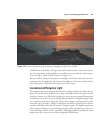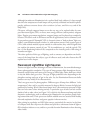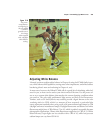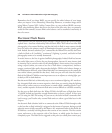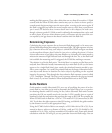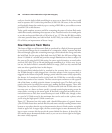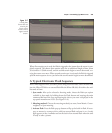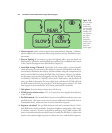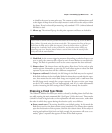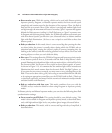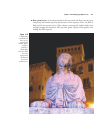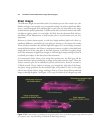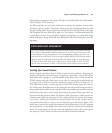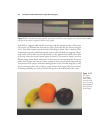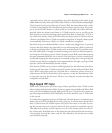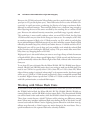
Chapter 12 ■ Making Light Work for You 411
Tip
If you want to confirm that the pre-flash fires before the mirror flips up, set the D7000 to
Mup (Mirror Up) mode using the release mode dial. (This separates the firing of the pre-
flash from the flash used to make the exposure.) Press the shutter release as you look
through the viewfinder. You’ll see the pre-flash fire, and then the mirror will flip up,
obscuring your view. Press the shutter release a second time to take the actual picture.
Only then will the main flash fire.
or classifies the scene in some other way. The camera to subject information as well
as the degree of sharp focus of the subject matter is used to locate the subject within
the frame. If you’ve selected Spot metering, only standard i-TTL (without balanced
fill flash) is used.
11. Mirror up. The mirror flips up. At this point exposure and focus are locked in.
12. Flash fired. At the correct triggering moment (depending on whether front or rear
sync is used), the camera sends a signal to one or more flashes to start flash dis-
charge. The flash is quenched as soon as the correct exposure has been achieved.
13. Shutter closes. The shutter closes and the mirror flips down. You’re ready to take
another picture. Remember to press the FV lock button again to release the flash
exposure if your next shot will use a different composition.
14. Exposure confirmed. Ordinarily, the full charge in the flash may not be required.
If the flash indicator in the viewfinder blinks for about three seconds after the expo-
sure, that means that the entire flash charge was required, and it could mean that
the full charge wasn’t enough for a proper exposure. Be sure to review your image
on the LCD to make sure it’s not underexposed, and, if it is, make adjustments
(such as increasing the ISO setting of the D7000) to remedy the situation.
Choosing a Flash Sync Mode
The Nikon D7000 has five flash sync modes, selected by holding down the Flash but-
ton while rotating the main command dial. (See Figure 12.8 for the icons.) Those modes
(which I’ve listed in logical order, so the explanation will make more sense, rather than
the order in which they appear during the selection cycle) are as follows:
■ Front-curtain sync. This setting should be your default setting. In this mode the
flash fires as soon as the front curtain opens completely. The shutter then remains
open for the duration of the exposure, until the rear curtain closes. If the subject is
moving and ambient light levels are high enough, the movement will cause a sec-
ondary “ghost” exposure that appears in front of the flash exposure.



